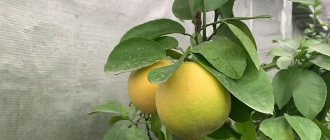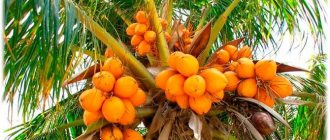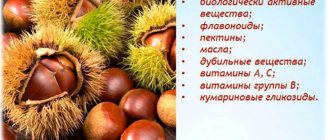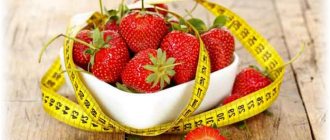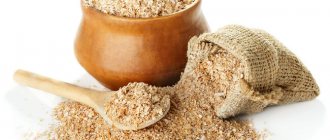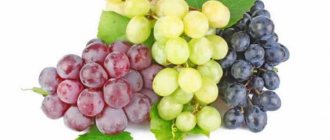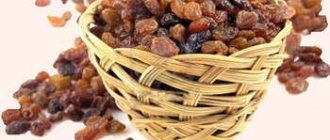For many, autumn is associated with a basket of chestnuts - sweet and nutritious. The unique taste of these fruits is valued all over the world, especially in the homeland of chestnut trees - Japan and China. But it’s worth warning right away: we are not talking about the fruits that are abundant underfoot in city parks and courtyards. The fruits of not all chestnuts are edible. Some varieties are completely poisonous. Therefore, do not rush to collect and fry fruits from the parks.
How to recognize edible chestnuts?
Content:
- How to recognize edible chestnuts?
- Chemical composition of fruits
- Health Benefits
- Treatment with chestnuts
- Possible side effects
- How to choose and store correctly
- What to cook
- Horse chestnut and edible: is there a difference?
True (edible) chestnuts are large, deciduous, heat-loving trees from the beech family. In spring they delight with greenery, and in autumn with nuts. Yes, these glossy brown fruits, hidden behind a prickly green skin, are nuts. And compared to other fruits from this group, these are quite large nuts with delicate white pulp (several nuts are usually hidden under the protective shell). Depending on the type, they can weigh from 8 to 12 g.
The first and most obvious confirmation of the edibility of the fruit is the appearance of the protective green shell. If it is covered with numerous thin light green spines, you have edible fruits. The peel with a relatively small number of thick spines is an ornamental plant.
There are several varieties of edible chestnuts. The most famous:
- Japanese (produces large, sweet fruits in October);
- Chinese;
- sweet (also known as Spanish or Portuguese, native to the European continent);
- American stunted (aka dwarf);
- American regular.
Harm of chestnuts
You should avoid eating edible chestnuts if:
- allergic reactions and individual intolerance to the product;
- renal failure;
Read: Calorie content of dried lime
- during breastfeeding and pregnancy;
- for diabetes mellitus, gastric and intestinal ulcers;
- with a tendency to flatulence.
Keep in mind that only special edible chestnuts can be eaten. Horse chestnut is poisonous and its consumption can lead to severe food poisoning.
Chemical composition of fruits
Chestnuts are a rich source of a variety of vitamins and minerals. Nuts contain the most B vitamins, ascorbic acid, copper, iron, manganese, phosphorus and potassium. The latter, for example, is important for healthy heart function, iron prevents anemia, and magnesium and phosphorus are important components of bone metabolism.
By the way, the presence of vitamin C makes chestnuts special. The fact is that nuts, as a rule, do not contain this vitamin, and chestnuts contain almost 72% of the recommended daily intake of ascorbic acid. This powerful antioxidant vitamin is necessary for the formation of collagen, a protein responsible for the beauty and youth of the body. It also stimulates the immune system, enhancing its response to infections and free radicals. In addition, chestnuts boast a generous amount of B vitamins and are low in fat. The body can also get almost half of the daily servings of copper and manganese from a 100-gram serving of cooked chestnuts.
Unlike extremely high-calorie walnuts or almonds, chestnuts contain only 200 kcal per 100 grams. At the same time, they are rich in starch, similar to that found in potatoes or corn. And this is also surprising, since starch is a substance unusual for nuts and seeds. The fruits are also rich in carbohydrates, but this should not be scary, since the carbohydrates in these nuts are correct, that is, complex (they do not cause glucose surges and will not increase weight if consumed in moderation).
Another amazing characteristic of chestnuts is their significant content of folic acid, which is necessary for the creation of red blood cells and DNA synthesis. Well, like typical nuts, the fruits are rich in monounsaturated fatty acids, which regulate the balance of “bad” and “good” cholesterol, prevent coronary artery disease and strokes.
But what chestnuts certainly do not contain is gluten, which cannot but please people with celiac disease.
People with wheat allergies can replace regular flour with chestnut flour. Nutritional value per 100 g
| Calorie content | 213 kcal |
| Squirrels | 2.42 g |
| Fats | 2.26 g |
| Carbohydrates | 45.54 g |
| Cellulose | 8.1 g |
| Vitamin A | 28 IU |
| Vitamin C | 43 mg |
| Vitamin B1 | 0.238 mg |
| Vitamin B2 | 0.168 mg |
| Vitamin B3 | 1.179 mg |
| Vitamin B5 | 0.509 mg |
| Vitamin B6 | 0.376 mg |
| Folic acid | 62 mcg |
| Sodium | 3 mg |
| Potassium | 518 mg |
| Calcium | 27 mg |
| Copper | 0.447 mg |
| Iron | 1.01 mg |
| Magnesium | 32 mg |
| Manganese | 0.952 mg |
| Phosphorus | 93 mg |
| Zinc | 0.52 mg |
Roasted chestnut
This is one of the most common autumn dishes in European and Asian countries. It has an amazing taste. It vaguely resembles a mixture of potatoes, corn and hazelnuts. But don’t get too carried away with the dish. The calorie content of roasted chestnuts per 100 grams of product is 182 kcal. The nutritional value of the product is:
- 3.2 grams of protein;
- 33.8 grams carbohydrates;
- 2.2 grams fat.
Chestnuts are a perishable product. Roasted nuts are best enjoyed when they are in season. It starts around mid-September. At this time, a large number of sellers appear on the autumn streets, offering a variety of chestnut dishes.
Interesting!
The fruits are fried in special roasting pans, over an open fire or in ovens. The finished product is very nourishing and tasty. In its qualities, it resembles rice or potatoes due to the increase in starch level.
The best chestnuts are those that have been cooked over an open fire or in an oven. Before sending them to bake, the fruits need to be slightly cut. If this is not done, they may simply explode.
Health Benefits
For teeth and bones
It is well known that a person needs calcium and phosphorus for strong teeth and bones. However, for both minerals to “work”, magnesium is necessary. The latter is responsible for the formation of hard enamel on teeth and protects bone tissue from degeneration and destruction. It is important that all three elements are present in chestnuts. True, calcium is presented in small quantities.
For blood vessels
Chestnuts, although they do not belong to fatty foods, chemically contain essential fatty acids, including linoleic, palmitic and oleic acids, which are responsible for the strength and elasticity of blood vessels. Another good news: these nuts not only contain a low concentration of cholesterol, but also cleanse the blood vessels of excess unhealthy fat that has already accumulated.
For the thyroid gland
The thyroid gland is the largest gland of the endocrine system. It produces two important hormones: triiodothyronine and thyroxine. It also regulates the rate at which the body uses energy, synthesizes proteins, and regulates the body's sensitivity to hormones. Ellagic acid, contained in chestnuts, regulates the functioning of the thyroid gland, and is particularly useful for overactive glands. The acid suppresses excessive thyroid secretion.
For digestion
Chestnuts contain a lot of fiber, which is essential for healthy circulation of digestive products in the system. However, with insufficient water consumption, fiber, on the contrary, causes constipation. But chestnuts are a unique product that combines dietary fiber and water in adequate proportions, making these nuts simply ideal for improving the digestion process.
For weight loss
Excess weight is not only an aesthetic problem. Different degrees of obesity cause disorders in the body. But losing weight should be gradual so as not to cause stress to the body. And chestnuts are the best fit for a proper weight loss program. They contain almost no fat, but provide satiety for a long time. In addition, they serve as an excellent source of essential minerals and vitamins for humans, and also prevent the accumulation of excess fluid in tissues.
For heart
Along with vitamin B12 and folic acid, vitamin B6 regulates levels of homocysteine, a non-protein amino acid that, in excess, causes inflammation and damage to blood vessels. This amino acid can cause clogged arteries. People with high levels of homocysteine are at increased risk of having a heart attack or stroke. Chestnut nuts are rich in components that prevent excessive homocysteine production.
Powerful antioxidant
The large amount of vitamin C, gallic acid and ellagic acid make chestnuts a strong and effective antioxidant. Antioxidant substances are important for the body to remove toxins and fight free radicals. Free radicals are formed in the body as a result of the reactive interaction of molecules with active oxygen. The uncontrolled growth of free radicals destroys the body's cells, causes damage to the DNA structure and ultimately causes malignant formations.
Chestnuts, with their powerful antioxidant properties, are responsible for detoxifying the body and optimizing the functioning of the immune system.
Preventing stone formation
Oxalates are ions that increase the risk of stone formation in the body. In particular, calcium oxalate is the culprit of kidney and gallstones. Oxalate levels in the body are directly related to the concentration of these substances in food. It is gratifying that chestnuts are a low-oxalate food. And magnesium, present in nuts, regulates the distribution of calcium in the body: it ensures maximum deposition of the mineral in the bones with minimal entry into the bloodstream, thereby preventing the formation of stones.
Benefits for pregnant women
Pregnancy is an important time for every woman, when she needs to take the best care of herself and her unborn child. The fetus, while developing, consumes a lot of nutrients, thereby depleting the mother's body. So proper nutrition and regular replenishment of nutrients are vital for both organisms. And chestnuts are a good choice for this. They supply minerals important for bone strength, preventing swelling and spasms, and also strengthen the immune system and protect against infections. And now another good news for expectant mothers: chestnuts relieve nausea in the first trimester of pregnancy.
Benefits of chestnut for the body
The unique chemical composition makes chestnut a healthy product.
Thanks to the consumption of nuts:
- the walls of blood vessels are strengthened;
- blood flow is activated by reducing blood clotting, expanding the lumen of veins and capillaries;
- brain functions improve;
- blood pressure decreases;
- stimulates the synthesis of enzymes, improving metabolism;
- muscle tone increases;
- swelling goes away.
Chestnut promotes quick saturation and gives energy to the body. The fruits can be consumed to restore strength after physical and mental stress.
The vegetable protein contained in nuts increases the value of the product for people following a vegetarian diet. They are recommended for use in nutrition to maintain protein balance.
Benefits for adult men and women
Moderate consumption of the fruits of the chestnut tree helps adults fight certain diseases.
What are the benefits of chestnut:
| For women | For men |
| Elimination of congestion in the pelvic area, normalization of the reproductive organs | Stimulating blood circulation helps restore potency |
| During menstruation – improved well-being, pain relief | Activation of blood flow. Flavonoids help reduce inflammation in prostatitis |
| Relief during menopause | Prevention of the formation of a malignant process in the prostate gland |
| Prevention of the development of mastopathy and cancer of the genital organs | Prevention of hemorrhoids |
Important! When consumed correctly, chestnut fruits prevent the formation of varicose veins.
Chestnut during pregnancy
A complex of elements and vitamins, the ability to provide energy and improve mood - these properties of chestnut make it a valuable product for pregnant women. Therefore, during the period of bearing a child, you are allowed to enjoy delicious fruits.
Be sure to read: Sunflower Kozinak: benefits and harms, calorie content, composition, daily intake for weight loss
But don’t get too carried away, as carbohydrates can cause excess weight gain, heavy food can cause bloating, and the effect on vascular tone can cause complications.
If the expectant mother is concerned about pressure surges, disturbances in the digestive tract, constipation, allergies, she should stop eating nuts.
Treatment with chestnuts
Severe diarrhea (such as dysentery) can cause severe dehydration, which is a big problem. In alternative medicine, chestnut is often mentioned as an astringent. Researchers, after several observations, agreed: the tree bark and its nuts help stop diarrhea. The water in which the fruits (along with the shell) or bark were boiled is rich in tannins, which have medicinal properties. Natural medicine is prepared from 3 tablespoons of crushed bark or nuts and 1 liter of water (cook for 20 minutes). The decoction is taken 2-3 glasses per day. But it is worth noting that this folk remedy is not suitable for children, since tannins have a bad effect on unformed organisms.
Researchers confirm that chestnuts contain substances that act as expectorants on the body. This ability of the chestnut is actively used by pharmacists and herbalists, creating cough syrups with an extract of this plant.
And in India, chestnuts are used to remove helminths from the body.
Fresh chestnut
The fruits contain a large amount of vitamins, minerals and other nutrients. Edible chestnuts are not usually consumed fresh. They are typically baked, fried, or made into confectionery additives or flour.
The calorie content of chestnuts is 166 kcal. The nutritional value of the product is as follows:
- 3.4 grams of protein;
- 30.6 grams carbohydrates;
- 3.0 grams fat.
Nuts make not only tasty and healthy dishes, but also a large number of different folk recipes that have a healing effect. Most often, chestnut is used as the main component in hemostatic drugs. Unripe fruits contain a lot of vitamin C. It has a beneficial effect on the human body. Therefore, in folk recipes, the edible nut is found in different forms. Other parts of the tree can also be used. Among them:
- kidneys;
- leaves;
- bark;
- wood.
Chestnut has long been used as food in a variety of dishes. It has a large number of unique properties that are important for the positive functioning of the human body. Today the product is found in the following forms:
- candied;
- fried;
- boiled;
- cheese;
- processed into alcohol;
- coffee drink;
- flour.
Carefully!
Fans of chestnut dishes should remember that nuts are high-calorie foods. Therefore, excessive consumption of the product can negatively affect a person’s figure in the form of extra pounds.
How to choose and store correctly
On the Eurasian continent, chestnuts appear on markets in October and do not lose their popularity until March. But still, the peak of sales occurs in December. When buying raw nuts, it is better to give preference to large and fresh specimens. To check the freshness of the fruits, you will have to cut one of them and evaluate the fleshiness and color of the kernel under the skin. You should not take nuts with a greenish streak between the outer shell and the kernel. Good chestnuts should be fairly heavy (for their size).
When it comes to storage rules, the same recommendations for chestnuts as for fruits or vegetables are more likely to apply, rather than the canons used for nuts. That is, the fruits will have to be packaged in an airtight container and placed in the refrigerator, where they will remain fresh for several more weeks.
What to cook
In the old days, the indigenous people of the American continent consumed chestnuts as one of their staple foods (similar to potatoes today).
Nowadays, roasted chestnuts are one of the most popular in the world. To prevent the nut from “exploding” during frying, several small cuts are made on the peel. In Japan, a popular fall dish is rice with steamed chestnuts. In Korea, a dessert is prepared from chestnuts, fruit marmalade, pine nuts and sticky rice. Koreans serve this delicacy on the New Year's table. Americans also use chestnuts as a stuffing option for the traditional turkey on Thanksgiving Day. In Tuscany, chestnut flour is prepared from dried and crushed fruits. It, like wheat, is suitable for bread, pies, donuts or pancakes; it is used as a thickener in sauces, soups and other dishes. Glazed chestnuts and butter made from these nuts are popular in Western European countries. A coffee substitute is made from roasted and crushed fruits.
The use of chestnut in cosmetology
The fruits, bark and leaves of chestnut are used in cosmetology. Extracts of all parts of the plant are included in creams, shampoos and hair balms, and nail care products.
Moisturizing and rejuvenating masks are prepared from crushed inflorescences by adding cucumber, cottage cheese, honey or egg.
Chestnut oil is made from nuts and when applied to the skin it has the following effects:
- softens and eliminates peeling;
- reduces inflammation;
- improves blood circulation and tones;
- relieves swelling;
- smoothes out wrinkles.
The oil is recommended for normal to dry skin and is well tolerated in cases of hypersensitivity.
Be sure to read: What are the benefits of walnuts for the body: calorie content, nutritional value
For oily skin with enlarged pores, prepare a lotion by mixing 100 ml of leaf decoction and a small spoon of vodka. The face is treated with the composition every day. After a week, the oily sheen will disappear and your facial skin will become smooth.
